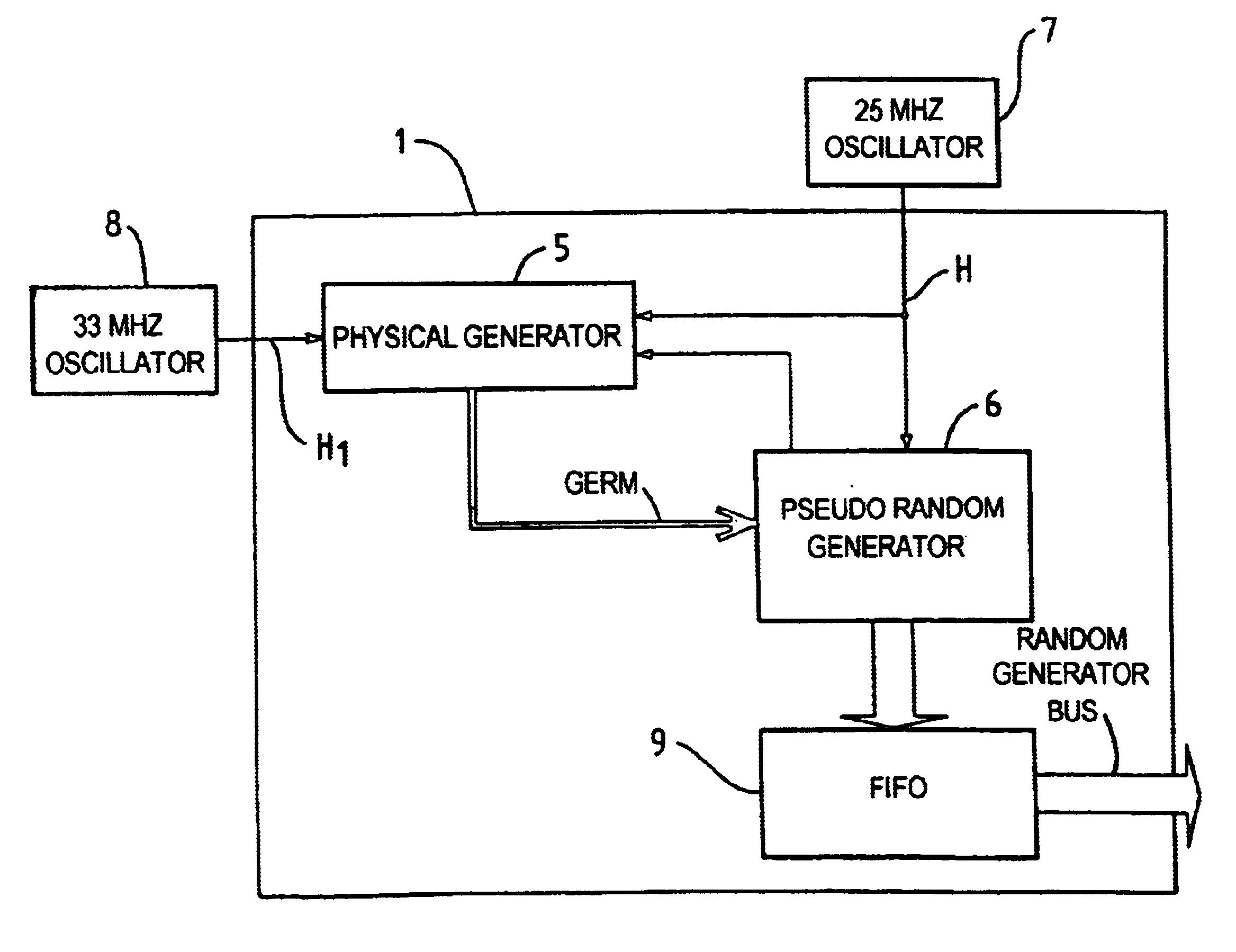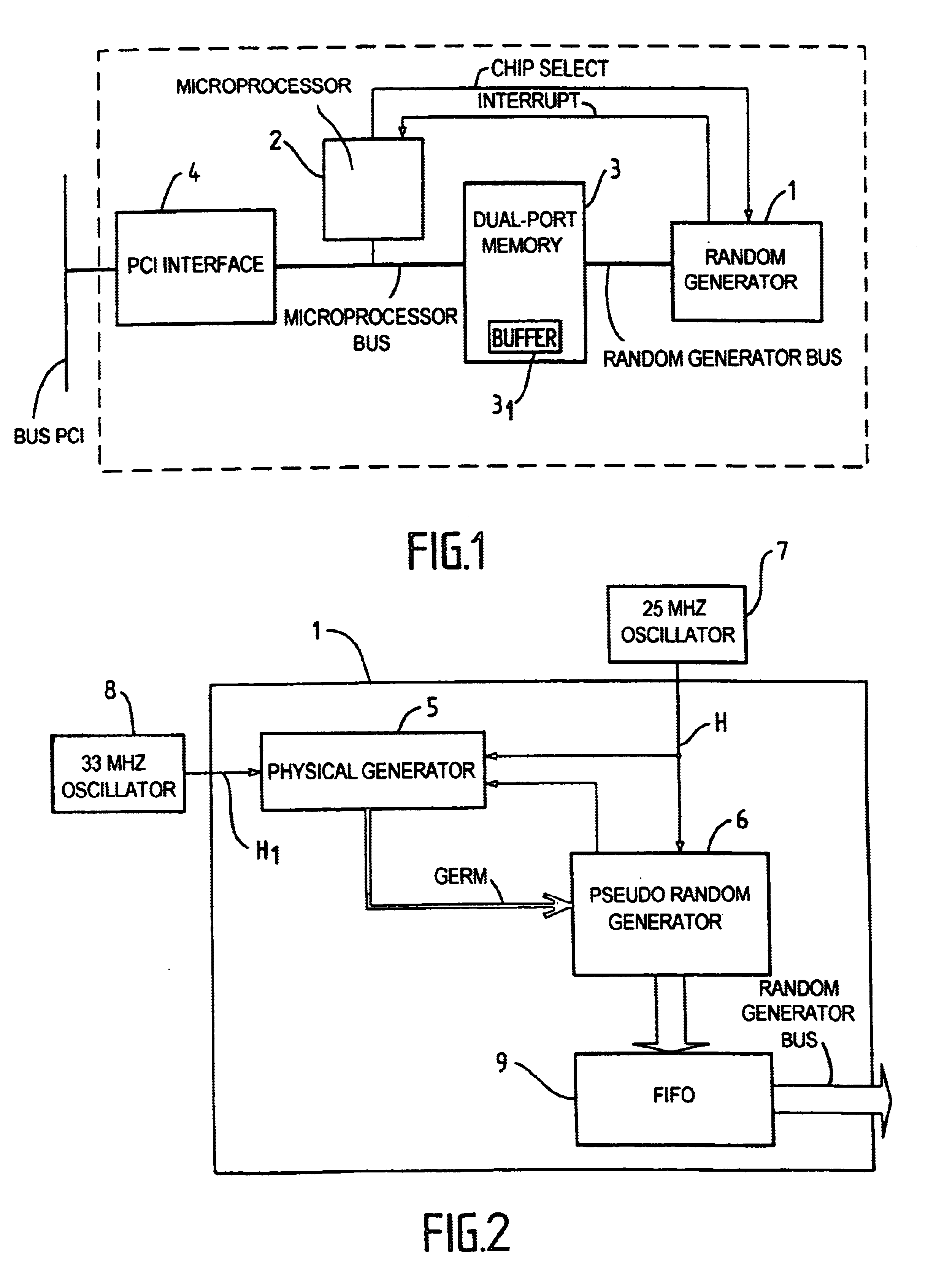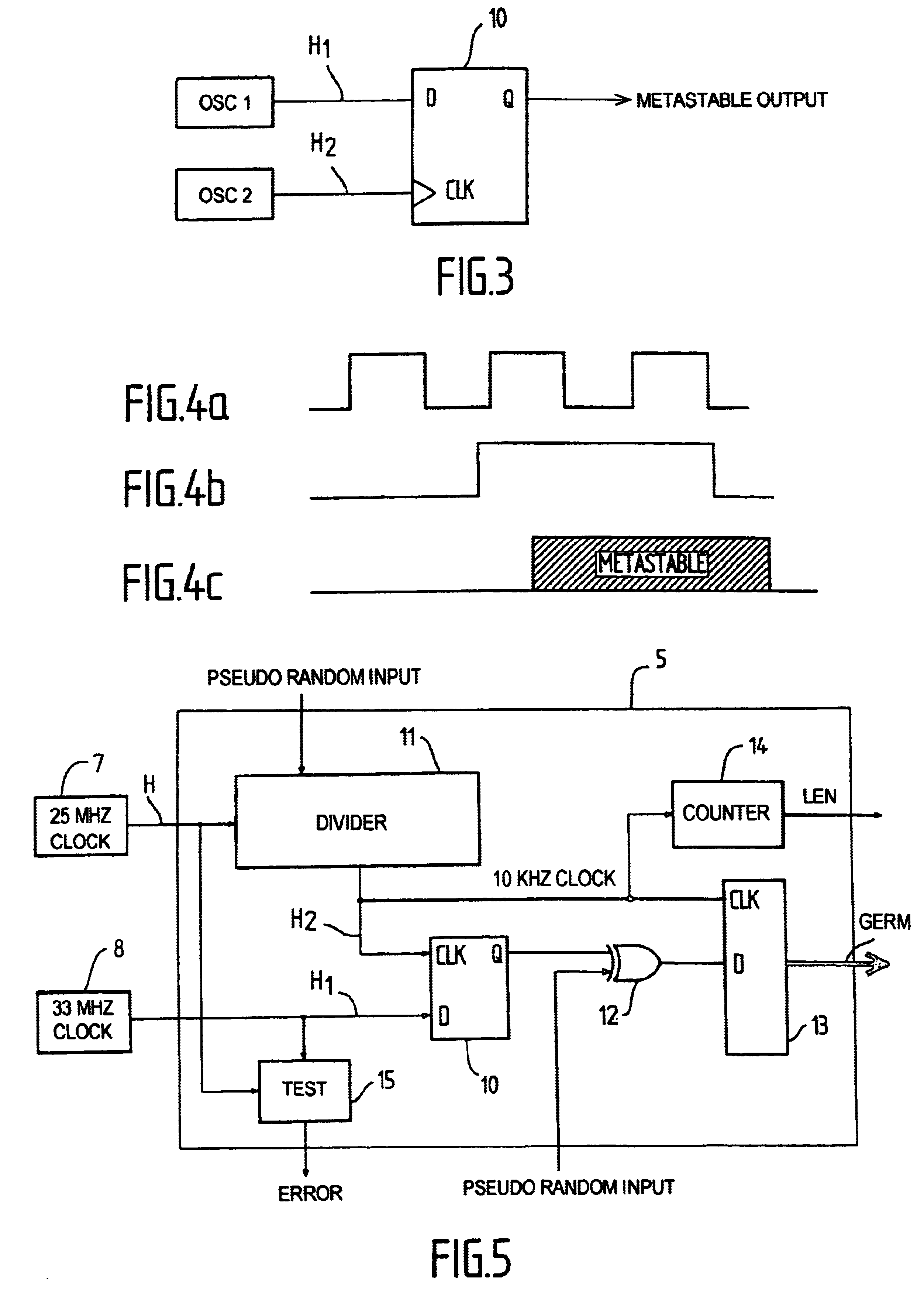High speed random number generation
a random number and high-speed technology, applied in the field of high-speed random number generation, can solve the problems of difficult to assess the quality of a random generator, many of them are not free from correlations at the output level, and their speed is generally somewhat slow
- Summary
- Abstract
- Description
- Claims
- Application Information
AI Technical Summary
Benefits of technology
Problems solved by technology
Method used
Image
Examples
Embodiment Construction
)
The general principle of a random number generating mechanism into which the generator according to the invention has been inserted is illustrated in FIG. 1.
In this figure, the links without arrows are two-way.
The mechanism is delimited in the figure by an enclosing broken line, which could also delimit a PDI card, mentioned above, that supports the mechanism.
The random generator 1 is produced from a programmable logic machine, implemented in a programmable electronic component called FPGA, for "Field Programmable Gate Array," and which, under the control of a microprocessor 2, at the request of the latter, delivers random numbers at a high speed (D>100 Mbits / s).
These random numbers are used by various algorithms, and more particularly by encryption algorithms to generate encryption keys.
A dual-port memory of the DMA (Direct Memory Access) type, is coupled to the output of the random generator 1 via the bus of the generator.
The microprocessor 2 is coupled to the dual-port memory vi...
PUM
 Login to View More
Login to View More Abstract
Description
Claims
Application Information
 Login to View More
Login to View More - R&D
- Intellectual Property
- Life Sciences
- Materials
- Tech Scout
- Unparalleled Data Quality
- Higher Quality Content
- 60% Fewer Hallucinations
Browse by: Latest US Patents, China's latest patents, Technical Efficacy Thesaurus, Application Domain, Technology Topic, Popular Technical Reports.
© 2025 PatSnap. All rights reserved.Legal|Privacy policy|Modern Slavery Act Transparency Statement|Sitemap|About US| Contact US: help@patsnap.com



